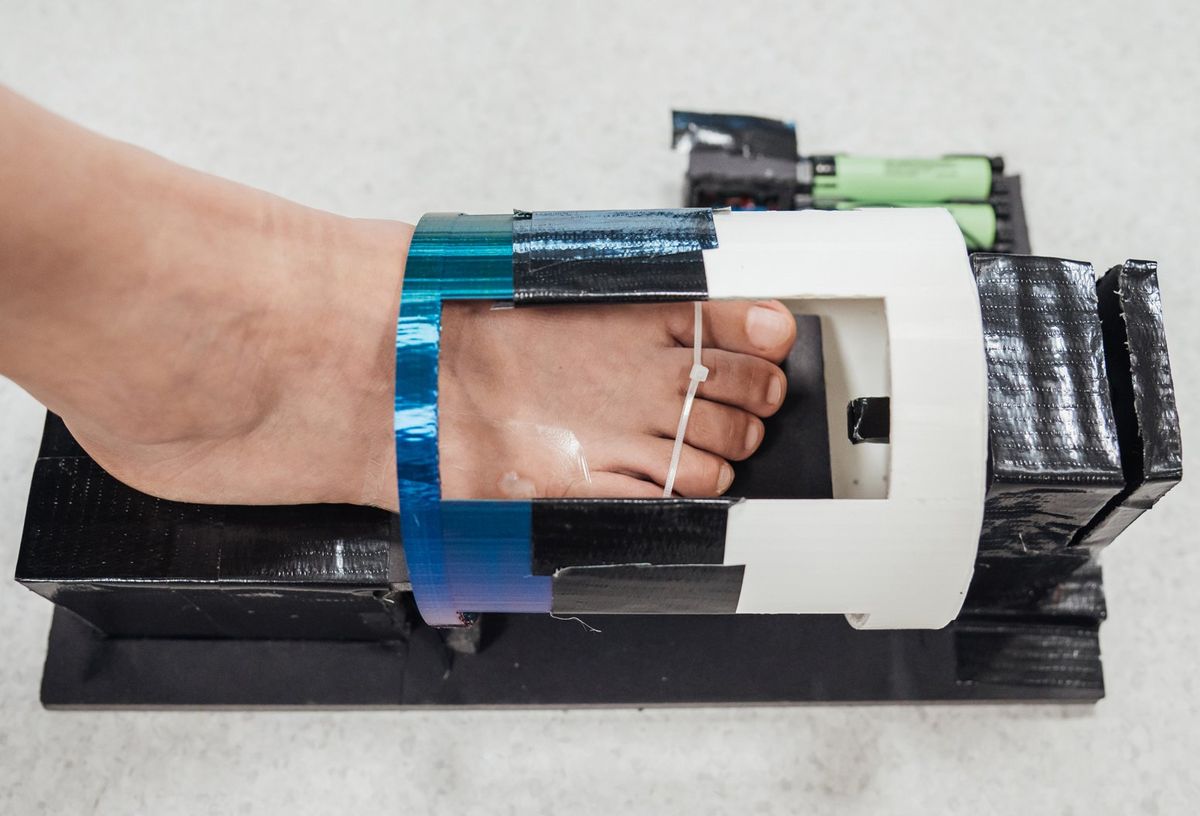Researchers have developed a magnetic gel that can help diabetic wounds heal roughly three times as fast as they would with a conventional wound dressing. The magnetic gel, in combination with an external device to generate a dynamic magnetic field gives the skin cells around the wound a gentle workout.
In a new study, researchers at the National University of Singapore focused on how to encourage chronic wounds, especially wounds in people with diabetes, to heal more quickly. Diabetes often compromises natural healing, and therefore, diabetics often develop chronic wounds that are slow to heal.
For example, diabetic foot ulcers afflict 15 to 25 percent of the roughly 30 million people living with diabetes in the United States. These and other chronic wounds linked to diabetes are the second leading cause worldwide of lower-limb amputations, after amputations necessitated by accidents or injuries. Currently, more than 540 million people globally are living with diabetes, according to the World Health Organization, and this number is expected to rise significantly over time.
“Approximately 10 to 15 percent of diabetic foot ulcers fail to heal,” says study senior author Andy Tay, a biomedical engineer at the National University of Singapore. “Shockingly, about a quarter of these nonhealing cases eventually necessitate amputation.”
Conventional dressings for wounds “fail to fundamentally accelerate the healing of wounds. They mainly serve to prevent wounds from deteriorating, requiring patients to follow a schedule for dressing changes every two to three days over an extended period,” Tay explains. “The fundamental reason behind their limited effectiveness lies in their inability to simultaneously address multiple critical factors associated with diabetic wounds, as well as their incapacity to modify the local microenvironment.”

In the new study, Tay and his colleagues investigated strategies to more actively treat chronic wounds, rather than wait for the body to take its time. They focused on the way in which the mechanical forces that a person’s skin normally experiences during daily activity can help spur healing. Those mechanical forces can trigger cell proliferation and migration, the secretion of growth factors, and the formation of new blood vessels. However, patients with wounds are usually advised not to walk around or undertake more rigorous activities.
The scientists found another way to create a mechanical force by experimenting with a gel that had been loaded with tiny magnetic particles. When exposed wirelessly to a dynamic magnetic field, the gel exerts a gentle, rhythmic mechanical force.
Aside from the magnetic particles, the researchers loaded the magnetic gel with two kinds of U.S. Food and Drug Administration-approved skin cells—keratinocytes, which are essential for skin repair, and fibroblasts, which help form connective tissue. The mechanical stimulation from the gel can help encourage the skin cells to become more active. The scientists also loaded this gel with insulin, which can influence blood-sugar levels in wounds to help guide the rate of healing.
“One of the most compelling features of this platform is its holistic ‘all-in-one’ approach to wound healing, targeting multiple aspects of the healing process simultaneously,” Tay says.
The scientists placed this gel in a bandage to help treat wounds in diabetic mice. They found the bandages helped wounds heal roughly three times as fast as current approaches, after applying magnetic stimulation for about 1 or 2 hours.
The novel dressings also promoted healing in other ways, the researchers say. For example, the bandages improved fibroblast growth rate by about 240 percent, and more than doubled the production of collagen, a key protein for wound healing. In addition, the researchers found that magnetically directed mechanical stimulation of the gel could help control the rate at which insulin was delivered into wounds.
“Our technology takes a comprehensive approach, effectively targeting several critical factors linked to diabetic wounds,” Tay says. “It not only manages elevated glucose levels within the wound area, but also reactivates dormant skin cells near the wound, restores damaged blood vessels, and repairs the disrupted vascular network within the wound.”
The researchers noted that this new technology may have applications beyond healing diabetic foot ulcers. For instance, it may help treat complex wounds such as burns, Tay says.
Currently, the researchers are conducting additional tests to refine the gel to enhance its effectiveness, Tay says. “In addition, we are collaborating with a clinical partner to assess the gel’s effectiveness using human tissues from diabetic patients,” he adds. “Together, we are working on addressing key challenges related to regulation, industrialization, and clinical implementation.”
The scientists detailed their findings online on 8 September in the journal Advanced Materials. They have also filed a patent for the technology.
Charles Q. Choi is a science reporter who contributes regularly to IEEE Spectrum. He has written for Scientific American, The New York Times, Wired, and Science, among others.



